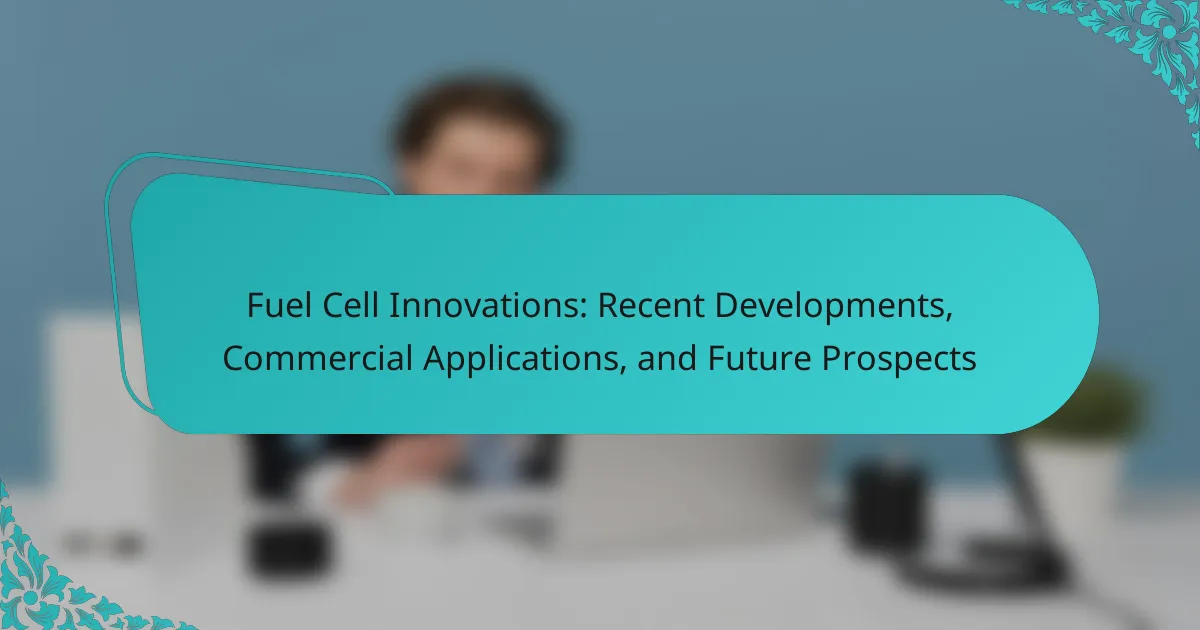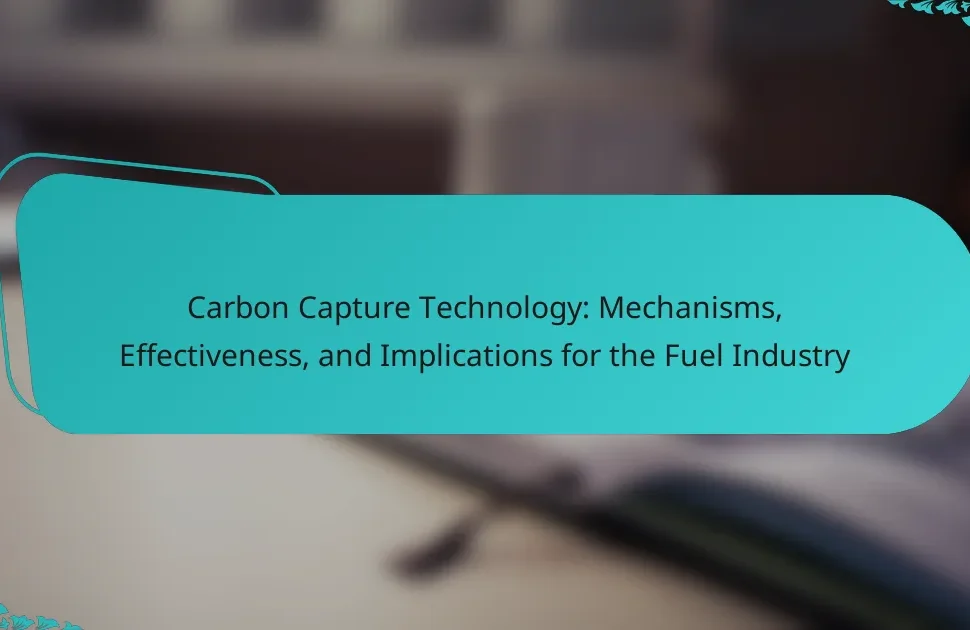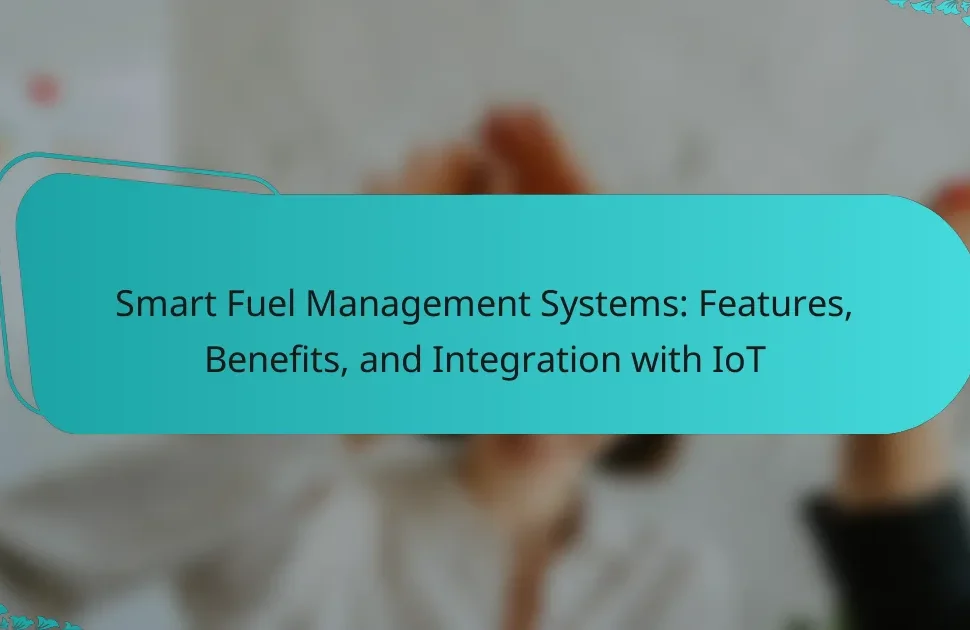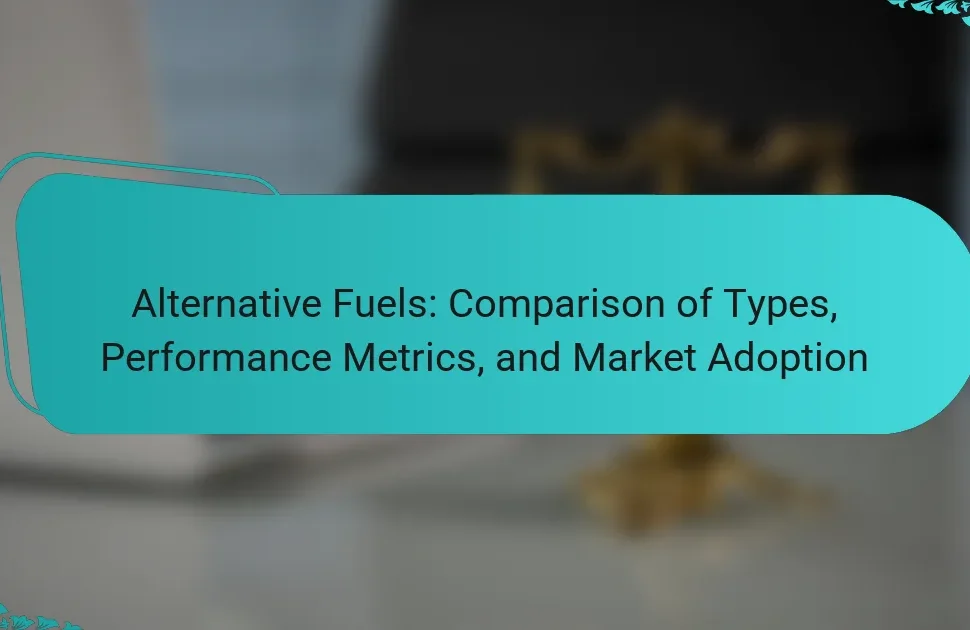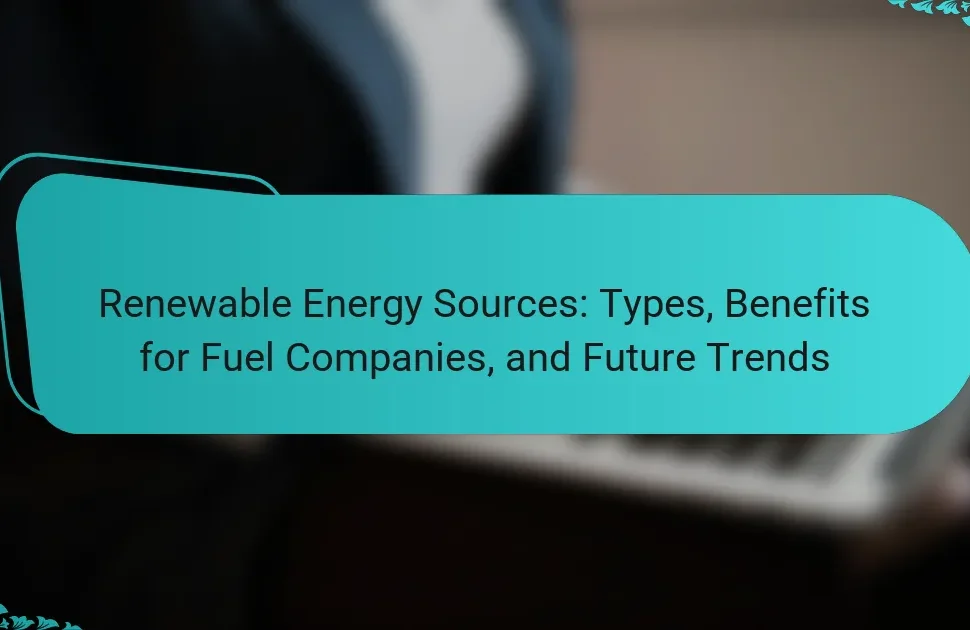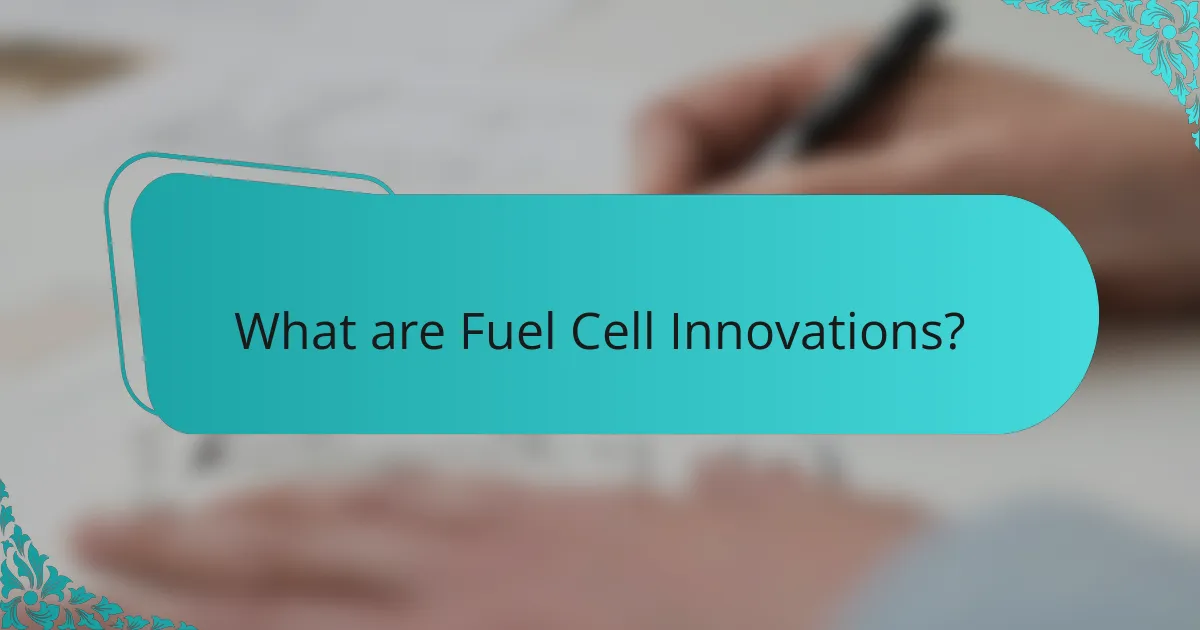
What are Fuel Cell Innovations?
Fuel cell innovations refer to advancements in fuel cell technology that enhance efficiency, reduce costs, and expand applications. These innovations include new materials, improved designs, and enhanced fuel cell systems. For example, researchers are developing proton exchange membrane fuel cells using advanced catalysts to increase performance. Additionally, solid oxide fuel cells are being optimized for higher temperature operations, improving energy conversion rates. Innovations also encompass integration with renewable energy sources, such as solar and wind, for sustainable power solutions. The global market for fuel cells is projected to grow significantly, driven by these innovations and increasing demand for clean energy technologies.
How do Fuel Cells function?
Fuel cells generate electricity through an electrochemical reaction. They combine hydrogen and oxygen to produce electricity, water, and heat. In a fuel cell, hydrogen acts as the fuel and is supplied to the anode. Oxygen, usually from air, is supplied to the cathode. At the anode, hydrogen molecules split into protons and electrons. The protons pass through an electrolyte membrane while the electrons flow through an external circuit, creating electric power. At the cathode, protons, electrons, and oxygen combine to form water and heat. This process is efficient and produces minimal emissions, making fuel cells a clean energy source.
What are the key components of a Fuel Cell?
The key components of a fuel cell include the anode, cathode, electrolyte, and external circuit. The anode is where the fuel, typically hydrogen, is oxidized. This process releases electrons, which flow through the external circuit to the cathode. The cathode is where oxygen is reduced, combining with the electrons and protons to form water. The electrolyte facilitates the transfer of ions between the anode and cathode while preventing the flow of electrons. Each component plays a critical role in the electrochemical reaction that generates electricity. Fuel cells operate efficiently, converting chemical energy directly into electrical energy with minimal emissions.
How do different types of Fuel Cells operate?
Different types of fuel cells operate through electrochemical processes that convert chemical energy into electrical energy. Proton Exchange Membrane Fuel Cells (PEMFCs) use a polymer membrane to conduct protons while blocking electrons. This creates a flow of electricity as electrons travel through an external circuit. Solid Oxide Fuel Cells (SOFCs) operate at high temperatures, using a ceramic electrolyte to allow oxygen ions to conduct electricity. Alkaline Fuel Cells (AFCs) utilize an alkaline electrolyte, which facilitates the reaction between hydrogen and oxygen to produce electricity. Each type of fuel cell has specific operational mechanisms and efficiencies. For instance, PEMFCs are known for rapid start-up and low operating temperatures, making them suitable for vehicles. SOFCs, on the other hand, are favored for stationary power generation due to their high efficiency.
Why are Fuel Cell Innovations important?
Fuel cell innovations are important because they provide a clean and efficient energy solution. These technologies convert chemical energy directly into electricity with minimal emissions. Fuel cells produce only water and heat as byproducts, making them environmentally friendly. They can utilize various fuels, including hydrogen, which can be produced from renewable sources. This versatility supports energy diversification and reduces reliance on fossil fuels. According to the U.S. Department of Energy, fuel cells can achieve efficiencies of up to 60%, significantly higher than traditional combustion engines. Furthermore, advancements in fuel cell technology are driving down costs, enhancing performance, and expanding applications in transportation, stationary power, and portable devices. This innovation is crucial for achieving energy sustainability and addressing climate change challenges.
What environmental benefits do Fuel Cells provide?
Fuel cells provide significant environmental benefits by producing energy with minimal emissions. They convert chemical energy directly into electrical energy through electrochemical reactions. This process emits only water and heat as byproducts, unlike traditional combustion methods that release greenhouse gases. Fuel cells can reduce air pollutants, contributing to improved air quality. For example, hydrogen fuel cells produce zero carbon emissions during operation. Additionally, they can utilize renewable hydrogen sources, further decreasing reliance on fossil fuels. The deployment of fuel cells can help mitigate climate change impacts by lowering overall carbon footprints.
How do Fuel Cells contribute to energy efficiency?
Fuel cells contribute to energy efficiency by converting chemical energy directly into electrical energy with minimal waste. This process typically achieves efficiencies of 40-60%, which is higher than traditional combustion engines that range from 20-30%. Fuel cells operate at lower temperatures, reducing thermal losses. They also utilize hydrogen, which can be produced from renewable sources, further enhancing sustainability. According to the U.S. Department of Energy, fuel cells can achieve up to 85% efficiency when used in combined heat and power systems. This means they not only generate electricity but also capture and use heat that would otherwise be wasted.
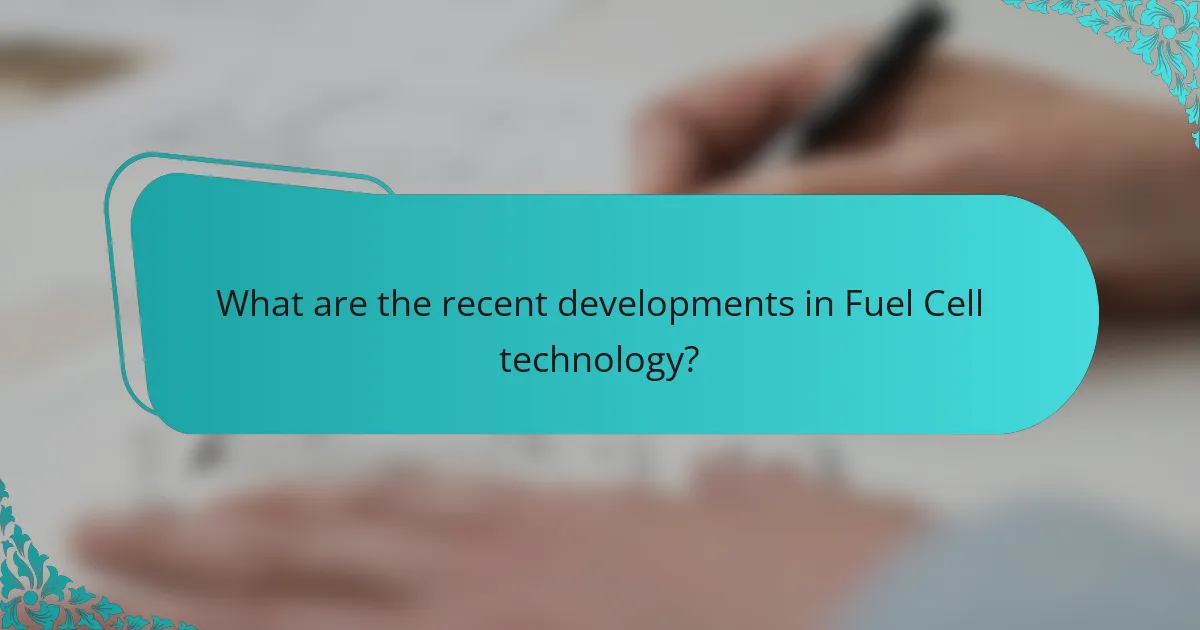
What are the recent developments in Fuel Cell technology?
Recent developments in fuel cell technology include advancements in efficiency and cost reduction. New materials are being researched to enhance performance. Solid oxide fuel cells (SOFC) are gaining attention for their high efficiency. Proton exchange membrane fuel cells (PEMFC) are being optimized for automotive applications. Companies are focusing on reducing platinum content to lower costs. Hydrogen production methods are also improving, making fuel cells more sustainable. Recent partnerships in the industry aim to accelerate commercialization. These developments are supported by increased investment in hydrogen infrastructure.
What breakthroughs have been made in Fuel Cell design?
Recent breakthroughs in fuel cell design include advancements in materials and efficiency. Notably, the development of proton exchange membrane fuel cells (PEMFCs) has improved performance. Researchers have introduced new catalysts that reduce platinum usage, lowering costs. Solid oxide fuel cells (SOFCs) have seen enhancements in thermal efficiency, reaching up to 65%. Innovations in 3D printing have allowed for more complex and efficient designs. Additionally, hybrid fuel cells combining solar energy have emerged, increasing versatility. These advancements collectively enhance the feasibility of fuel cells in commercial applications, such as transportation and stationary power generation.
How have materials science advancements impacted Fuel Cells?
Materials science advancements have significantly improved fuel cells. These advancements have led to the development of more efficient catalysts. For example, platinum-based catalysts have been optimized to reduce costs and enhance performance. New membrane materials have improved proton conductivity and durability. This results in longer-lasting fuel cells with higher power outputs. Additionally, advancements in nanomaterials have enabled better electron transport. Research indicates that these innovations can lead to fuel cells with 30% higher efficiency. Overall, materials science has played a crucial role in making fuel cells more viable for commercial applications.
What role does nanotechnology play in Fuel Cell innovations?
Nanotechnology enhances fuel cell innovations by improving efficiency and performance. It enables the development of advanced catalysts with increased surface area. These catalysts facilitate faster reactions, leading to higher power output. Nanomaterials also reduce the amount of precious metals needed in fuel cells. This reduction lowers costs and increases sustainability. Furthermore, nanotechnology aids in the creation of better membranes that conduct protons more effectively. Enhanced membranes improve overall fuel cell durability and longevity. Studies show that integrating nanotechnology can lead to significant performance gains in fuel cells.
What are the latest trends in Fuel Cell research?
Recent trends in fuel cell research focus on improving efficiency and reducing costs. Researchers are developing advanced materials for catalysts to enhance performance. Solid oxide fuel cells (SOFCs) are gaining attention for their high efficiency and fuel flexibility. Proton exchange membrane fuel cells (PEMFCs) are being optimized for automotive applications. Innovations in hydrogen production, including electrolysis and biogas reforming, are also significant. Additionally, integration of fuel cells with renewable energy sources is being explored. These trends reflect a growing emphasis on sustainability and energy transition in fuel cell technology.
Which new applications are being explored for Fuel Cells?
New applications being explored for fuel cells include transportation, portable power sources, and stationary energy generation. In transportation, fuel cells are being integrated into vehicles, buses, and trains to reduce emissions. Portable power sources are being developed for electronic devices and remote locations, offering clean energy solutions. Stationary energy generation focuses on providing backup power for homes and businesses. These applications are supported by advancements in hydrogen production and fuel cell efficiency.
How is the automotive industry adopting Fuel Cell technology?
The automotive industry is increasingly adopting fuel cell technology for cleaner energy solutions. Major manufacturers like Toyota and Honda have launched fuel cell vehicles (FCVs) such as the Toyota Mirai and Honda Clarity. These vehicles use hydrogen to generate electricity, producing only water vapor as a byproduct. The industry is investing in hydrogen infrastructure to support FCV refueling stations. According to the Hydrogen Council, the global hydrogen market could reach $2.5 trillion by 2050. Additionally, partnerships between automotive companies and energy firms are enhancing hydrogen production and distribution. This collaborative approach is driving innovation in fuel cell technology, making it a viable alternative to traditional fossil fuels.
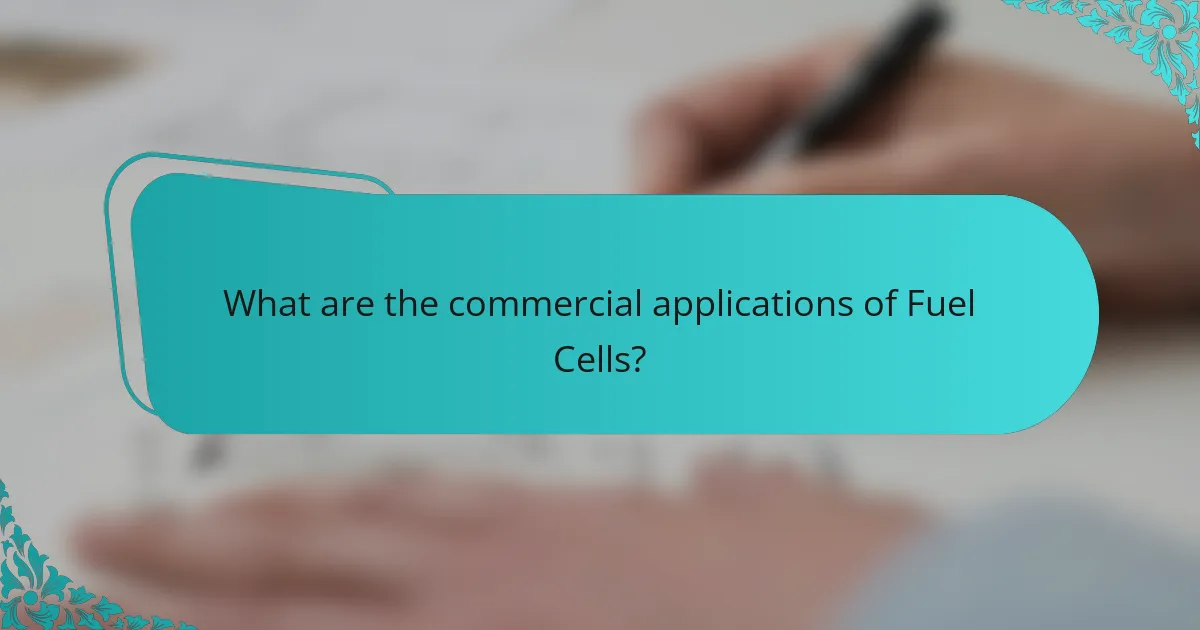
What are the commercial applications of Fuel Cells?
Fuel cells have various commercial applications across multiple sectors. They are widely used in transportation, providing power for fuel cell electric vehicles (FCEVs). Companies like Toyota and Honda have developed FCEVs for consumer use. In stationary power generation, fuel cells supply electricity for buildings and facilities, enhancing energy efficiency. The telecommunications industry utilizes fuel cells for backup power systems, ensuring reliability during outages. Additionally, fuel cells are employed in portable power applications, such as powering electronic devices and equipment. The aerospace sector is exploring fuel cells for aircraft propulsion, aiming to reduce emissions. According to a report by the U.S. Department of Energy, fuel cells can achieve high efficiency and low emissions, making them a viable alternative to conventional energy sources.
In which industries are Fuel Cells being utilized?
Fuel cells are utilized in various industries, including transportation, stationary power generation, and portable power applications. In transportation, fuel cells power vehicles such as buses, cars, and trucks. The automotive industry is increasingly adopting fuel cell technology for its zero-emission capabilities. In stationary power generation, fuel cells provide reliable energy for buildings and facilities. They are also used in backup power systems for critical infrastructure. Portable power applications include powering electronic devices and equipment in remote locations. These industries benefit from fuel cells’ efficiency and low environmental impact.
How are Fuel Cells transforming public transportation?
Fuel cells are transforming public transportation by providing a cleaner and more efficient energy source. They generate electricity through a chemical reaction, producing only water and heat as byproducts. This significantly reduces greenhouse gas emissions compared to traditional fossil fuel vehicles. Many cities are adopting hydrogen fuel cell buses to enhance air quality. For instance, the California Fuel Cell Partnership reported that hydrogen fuel cell buses emit zero tailpipe emissions. Additionally, fuel cells offer longer ranges and quicker refueling times than battery electric vehicles. This makes them ideal for public transport systems requiring reliability and efficiency. The transition to fuel cells aligns with global sustainability goals, making public transportation greener.
What is the role of Fuel Cells in stationary power generation?
Fuel cells play a crucial role in stationary power generation by converting chemical energy directly into electricity. They provide a reliable and efficient power source for various applications, including commercial buildings and industrial facilities. Fuel cells operate with high efficiency, often exceeding 60% compared to traditional combustion-based systems. They produce minimal emissions, contributing to cleaner energy solutions. According to the U.S. Department of Energy, fuel cells can reduce greenhouse gas emissions significantly. Additionally, fuel cells offer scalability, enabling deployment from small systems to large power plants. Their ability to utilize diverse fuels, including hydrogen and natural gas, enhances their versatility in stationary applications. Overall, fuel cells represent a sustainable option for meeting energy demands in a low-emission context.
What challenges do Fuel Cell applications face in the market?
Fuel cell applications face several significant challenges in the market. High production costs remain a primary barrier. Manufacturing fuel cells involves expensive materials, such as platinum catalysts. This increases the overall cost of fuel cell systems. Limited infrastructure for hydrogen refueling is another major challenge. Most regions lack a widespread network of hydrogen stations. This restricts the practical use of fuel cells in transportation. Additionally, fuel cells have durability and reliability issues. Many fuel cells degrade faster than expected under operational conditions. Lastly, competition from battery electric vehicles is intensifying. As battery technology improves, fuel cells may struggle to gain market share.
How do costs affect the adoption of Fuel Cell technology?
Costs significantly influence the adoption of Fuel Cell technology. High initial costs deter investments and hinder widespread implementation. According to the U.S. Department of Energy, fuel cell systems can range from $1,000 to $4,000 per kilowatt. These costs include materials, manufacturing, and research expenses. Lowering production costs can enhance market competitiveness. Economies of scale from increased production can drive down prices. Additionally, government incentives can alleviate financial burdens. For instance, tax credits and grants can promote adoption. Ultimately, reducing costs is crucial for the broader acceptance of fuel cell technologies.
What infrastructure is needed to support Fuel Cell usage?
Fuel cell usage requires a comprehensive infrastructure that includes hydrogen production, storage, and distribution systems. Hydrogen production facilities must generate hydrogen through methods like electrolysis or steam methane reforming. Storage solutions are necessary to hold hydrogen safely, typically in high-pressure tanks or underground caverns. Distribution networks must transport hydrogen to fuel cell stations and end-users efficiently. Fueling stations equipped with dispensers are essential for refueling fuel cell vehicles. Additionally, power grid integration is needed to support the energy demands of electrolysis processes. This infrastructure is critical for the widespread adoption of fuel cell technology, as highlighted by the U.S. Department of Energy’s Hydrogen and Fuel Cell Program, which emphasizes the need for robust hydrogen infrastructure to enable market growth.
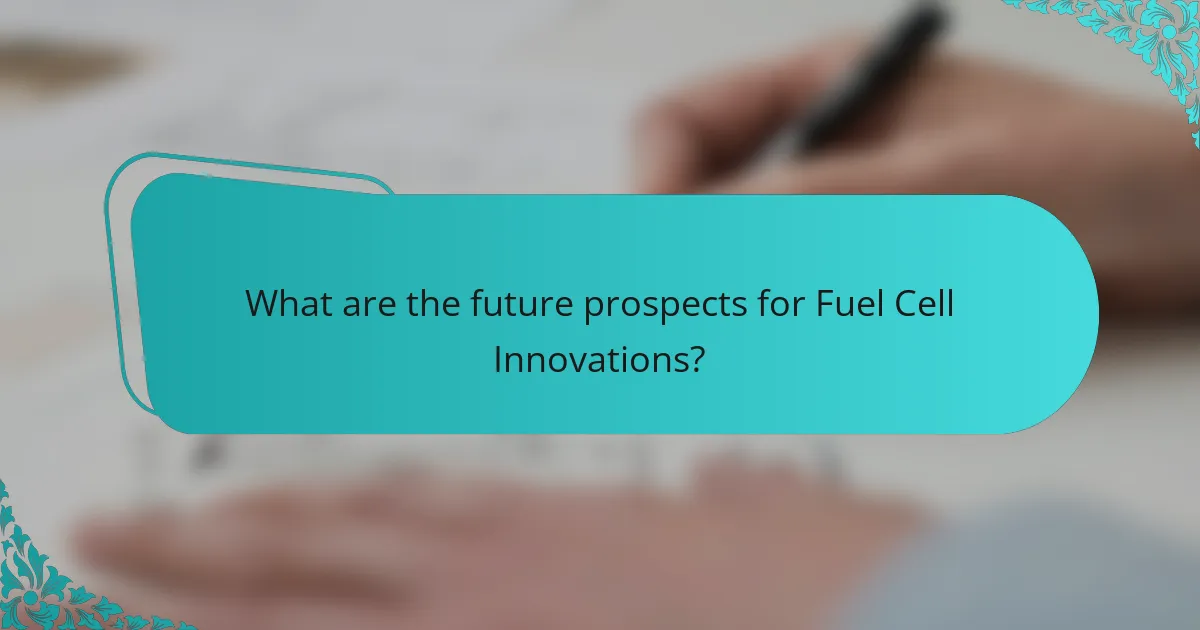
What are the future prospects for Fuel Cell Innovations?
The future prospects for fuel cell innovations are promising. Advancements in technology are expected to enhance efficiency and reduce costs. The global market for fuel cells is projected to reach $30 billion by 2025. This growth is driven by increasing demand for clean energy solutions. Governments are implementing policies to support hydrogen fuel cell adoption. Automakers are investing heavily in fuel cell vehicles. Research institutions are exploring new materials to improve performance. Overall, fuel cell innovations are likely to play a significant role in the transition to sustainable energy systems.
What advancements can we expect in Fuel Cell technology?
Advancements in fuel cell technology will focus on increased efficiency and reduced costs. Researchers are developing new materials to enhance performance. Solid oxide fuel cells (SOFCs) are being optimized for higher temperatures. Innovations in proton exchange membrane fuel cells (PEMFCs) aim to improve durability. Advances in hydrogen production methods will support fuel cell adoption. Integration with renewable energy sources is also a priority. The global market for fuel cells is projected to grow significantly, reaching $30 billion by 2025. These trends indicate a promising future for fuel cell technology.
How might Fuel Cells evolve to meet global energy demands?
Fuel cells may evolve by enhancing efficiency and reducing costs. Advances in membrane technology can improve performance. Innovations in catalyst materials can lower the amount needed for reactions. Integration with renewable energy sources will increase their viability. Fuel cells can adapt to utilize hydrogen from various sources, including water and biomass. The development of solid oxide fuel cells offers high efficiency for stationary applications. Additionally, scaling production will make fuel cells more commercially viable. Research indicates that fuel cells could play a significant role in achieving net-zero emissions by 2050.
What role will government policies play in Fuel Cell development?
Government policies play a crucial role in fuel cell development. They provide funding and incentives for research and innovation. Policies can establish regulatory frameworks that support the commercialization of fuel cell technologies. Additionally, government initiatives can promote public-private partnerships to accelerate development. For instance, the U.S. Department of Energy has invested significantly in fuel cell research. Such investments have led to advancements in efficiency and cost reduction. Furthermore, policies can encourage the adoption of fuel cells in transportation and stationary applications. This creates a market demand that drives further innovation and investment in the sector.
What are the best practices for implementing Fuel Cell technology?
The best practices for implementing Fuel Cell technology include conducting thorough feasibility studies. These studies assess the technical and economic viability of fuel cell projects. Proper site selection is crucial, as it impacts performance and accessibility to resources. Ensuring reliable fuel supply is essential for consistent operation. Integrating fuel cells with existing energy systems enhances efficiency and reliability. Regular maintenance schedules should be established to ensure optimal performance and longevity. Training personnel on fuel cell operation and safety is vital for effective implementation. Collaborating with stakeholders can provide insights and resources to support the project. Adhering to regulations and standards ensures compliance and safety in operations.
How can organizations effectively integrate Fuel Cells into their operations?
Organizations can effectively integrate fuel cells into their operations by assessing their energy needs and identifying suitable applications. They should evaluate the operational environment to determine the feasibility of fuel cell technology. Developing a robust business case is essential to justify the investment in fuel cells. Collaborating with fuel cell manufacturers can provide technical support and expertise.
Training staff on fuel cell technology is crucial for smooth implementation. Organizations must also establish maintenance protocols to ensure reliability and efficiency. According to the U.S. Department of Energy, fuel cells can reduce greenhouse gas emissions significantly. This aligns with sustainability goals and enhances corporate social responsibility.
What considerations should be taken into account for successful Fuel Cell projects?
Successful Fuel Cell projects require careful planning and execution. Key considerations include technology selection, which impacts efficiency and cost. Project financing is crucial, as fuel cells often involve significant upfront investment. Regulatory compliance must be addressed to meet safety and environmental standards. Stakeholder engagement is essential for support and collaboration. Infrastructure availability influences project feasibility, particularly for hydrogen supply and distribution. Performance metrics should be established to evaluate success and improvements over time. Finally, ongoing maintenance and support strategies are necessary to ensure long-term operational reliability.
Fuel cell innovations encompass advancements in fuel cell technology aimed at enhancing efficiency, reducing costs, and expanding applications across various sectors. Key components of fuel cells, such as the anode, cathode, and electrolyte, play vital roles in the electrochemical processes that generate electricity with minimal emissions. Recent developments include improvements in materials science, design breakthroughs, and integration with renewable energy sources, driving the growth of fuel cells in transportation, stationary power generation, and portable applications. The article also explores the challenges facing fuel cell adoption, future prospects for technology advancements, and the role of government policies in supporting the fuel cell market.
